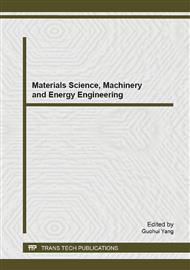[1]
Y. Li, W. Xu, K.W. Yeung and Y.L. Kowk: Moisture Management of Textiles, U.S. patent 6, 499, 338 B2. (2000).
Google Scholar
[2]
R.L. Barker: From fabric hand to thermal comfort: the evolving role of objective measurements in explaining human comfort response to textiles, International Journal of Clothing Science and Technology 14(3-4), 181-200 (2002).
DOI: 10.1108/09556220210437158
Google Scholar
[3]
J. Hu, Y. Li, K.W. Yeung, A.S.W. Wong and W. Xu: Moisture Management Tester: A Method to Characterize Fabric Liquid Moisture Management Properties, Textile Research Journal 75(1), 57-62 (2005).
DOI: 10.1177/004051750507500111
Google Scholar
[4]
F. Kar, J. Fan and W. Yu. Comparison of different test methods for the measurement of fabric or garment moisture transfer properties, Measurement Science and Technology 18 (7) 2033 (2007).
DOI: 10.1088/0957-0233/18/7/032
Google Scholar
[5]
X. Ding: Fabric permeability testing, in Fabric testing, edtied by J.L. Hu. The Textile Institute: New York. 189-227 ( 2008).
DOI: 10.1533/9781845695064.189
Google Scholar
[6]
M. Feyne, S.F. Ng, C.L. Hui, Y. Li and J.Y. Hu: An Objective Method to Characterize Moisture Management Properties of Disposable Diaper, Textile Research Journal 81(16) 1647-1654 (2011).
DOI: 10.1177/0040517511407375
Google Scholar
[7]
Y.C. Du and J. Li: Dynamic Moisture Absorption Behavior of Polyester-Cotton Fabric and Mathematical Model, Textile Research Journal 80(17) 1793-1802 (2010).
DOI: 10.1177/0040517510365950
Google Scholar
[8]
T. Hashimoto, K. Warashina and H. Yamauchi: New composite evolutionary computation algorithm using interactions among genetic evolution, individual learning and social learning, Intelligent Data Analysis 14 497-514 (2010).
DOI: 10.3233/ida-2010-0434
Google Scholar
[9]
F. Zand: Moisture sensing apparatus U.S. patent 6559772. (2003).
Google Scholar
[10]
J.G. Priestley: The regulation of excretion of water by the kidneys, The Journal of Physiology 50(5) (1916).
Google Scholar


